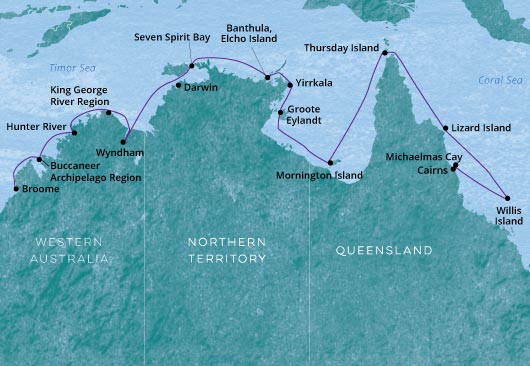
Broome (Kimberley) to Cairns
STYLE: LUXURY
There are many beautiful places on Earth, but close to the top of the list is The Kimberley. Three times the size of England, home to 40,000 people (per kilometre less than anywhere else on Earth), this vast area is home to a huge variety of natural interest. Let our team of experts educate you on the untamed wildlife, complex geology and Aboriginal rock art, so that you can uncover the secrets of this spectacular region.
ITINERARY SUMMARY
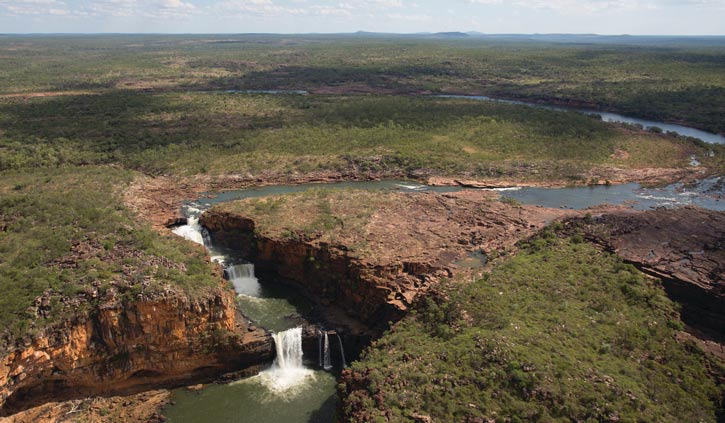
DAY 1 DEPART BROOME
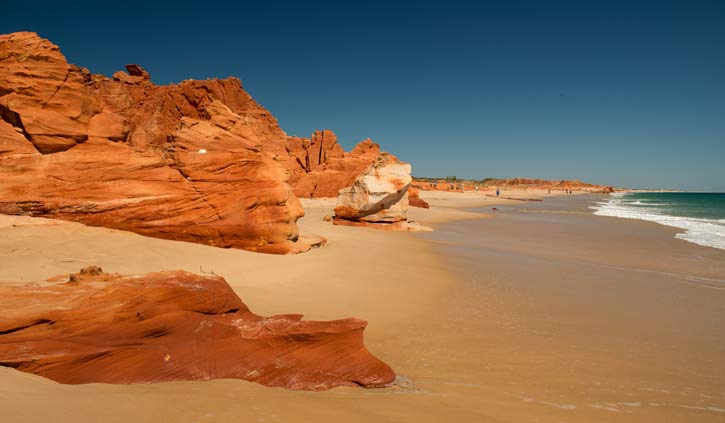
Roughly 15,000 people live year-round in Broome perched on the edge of the Kimberley region of Western Australia. The population swells to over 45,000 during the tourist season as people from all over the world are drawn to the natural splendors of the Dampier Peninsula. Broome is surrounded by lush green mangroves and mudflats along Roebuck Bay, but the interior is dry and rugged like much of the Kimberley coast. The town of Broome started up around a nascent pearling industry that attracted Japanese, Chinese, Malay and Aboriginal divers to the area in an interesting mix of cultures. Chinatown is still the centre of town, but nowadays the pearls are produced in modern aquaculture facilities. The Silver Explorer will depart at 4:30pm.
DAYS 2 & 3 BUCCANEER ARCHIPELAGO
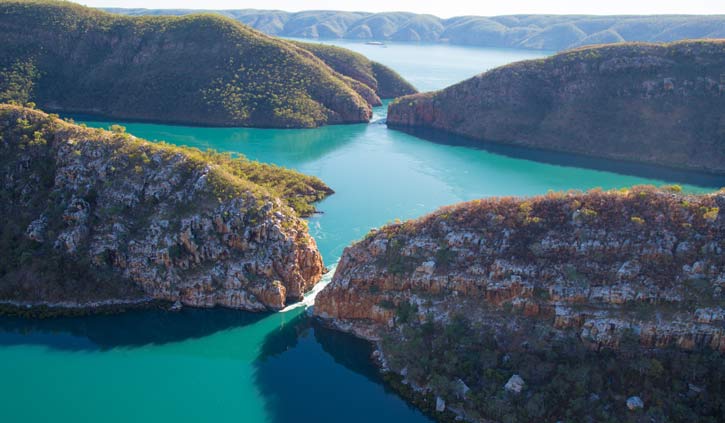
Roughly 800 islands of the Buccaneer Archipelago surround and shelter the impressive spread of Yampi Sound (from the aboriginal word for water, “Yampee”). The area was named in 1821 by Captain Phillip Parker King, in commemoration of William Dampier’s visit in 1688. Pearlers began visiting the area in the late 1800s, and more recently mining operators established open-cut mines on Koolan Island on the east side of the Sound. Some of the richest iron ore in the world is extracted here to this day. The coastline of Yampi shows rock layers wildly twisted and contorted into great folds. White-bellied Sea Eagles, Brahminy Kites, Ospreys, Common Sandpipers and Eastern Reef Egrets inhabit the archipelago and the area is rich in fish life, which in turn is an attraction for bottlenose dolphins that come here to feed. Yampi Sound is also occassionaly a calving ground for humpback whales and mothers and calves can sometimes be spotted in the relatively shallow turquoise waters.
DAYS 4 & 5 HUNTER RIVER REGION
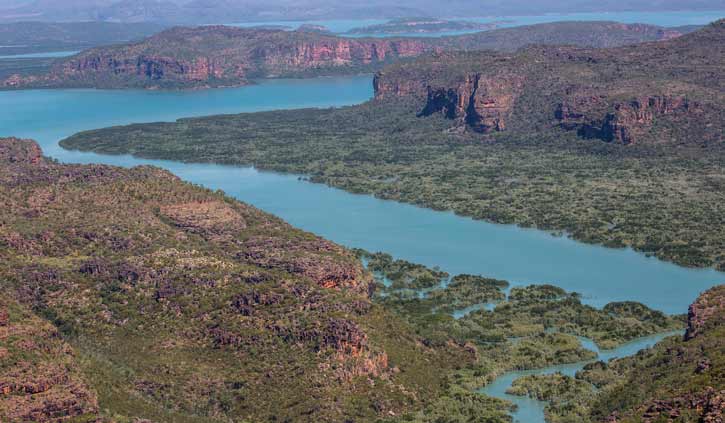
The Hunter River is home to an immense mangrove system surrounded by soaring red sandstone cliffs. Narrow mangrove channels shelter numerous bird species, mudskippers, fiddler crabs and the infamous saltwater crocodile; the most aggressive crocodile species known to man. Naturalist Island at the mouth of the river has a stunning stretch of sandy beach that makes a perfect landing site for small helicopters that can pick up visitors wishing to explore some of the Kimberley’s vast interior. The highlight inland is the famous Mitchell Falls where four tiers of waterfalls plunge into deep pools that flow out into the mighty Mitchell River. The headwaters of the falls are cool and a dip in the fresh water is a welcome reprieve from the heat of the heartland.
DAY 6 KING GEORGE RIVER
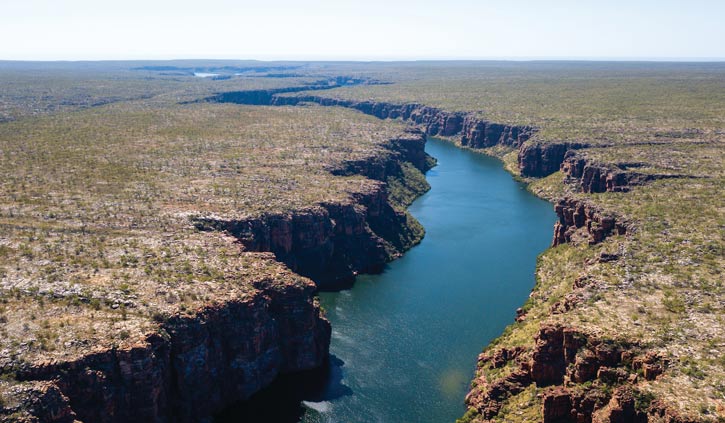
The King George Falls is one of the Kimberley’s most magnificent natural wonders. At 80 metres, the thundering spectacle of twin cascades are among the highest in Australia. The river weaves through an amazing landscape of near vertical red rock formations and a parade of wildlife — carnivorous saltwater crocodiles and amazing birdlife, including giant raptors and the Brahminy Kite.
DAY 7 WYNDHAM
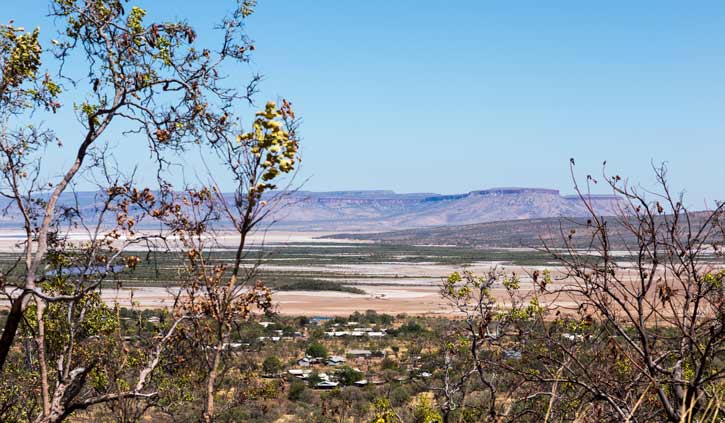
Wyndham is a small settlement with the spirit of a Kimberley outback township. It was established in 1886 with the Halls Creek gold rush and sits on the Cambridge Gulf where several rivers converge. Today Wyndham has a population of roughly 900 people and operates largely as a port exporting cattle, servicing the mining industry and hosting a few small ships. For these vessels Wyndham is a gateway to the breathtaking Bungle Bungle mountain range and the nearby Ord River. The Bungle Bungle Mountains in Purnululu National Park are now a World Heritage Site. In excess of 350 million years have shaped geological formations of giant orange and black striped domes rising out of the ground into a landscape unlike any other. Known to the local Aboriginal people for thousands of years, the Bungles were only discovered by the outside world in the mid-1980s. Conversely, cruising the peaceful and tree-lined Ord River is a chance to look for freshwater crocodiles, fruit bats, short-eared rock wallabies and a variety of birds, including Mangrove Herons and Mangrove Gerygones. Please note: All destinations on voyages in the Kimberley region, and the order in which they are visited, are subject to tidal variations and weather conditions.
DAY 8 AT SEA
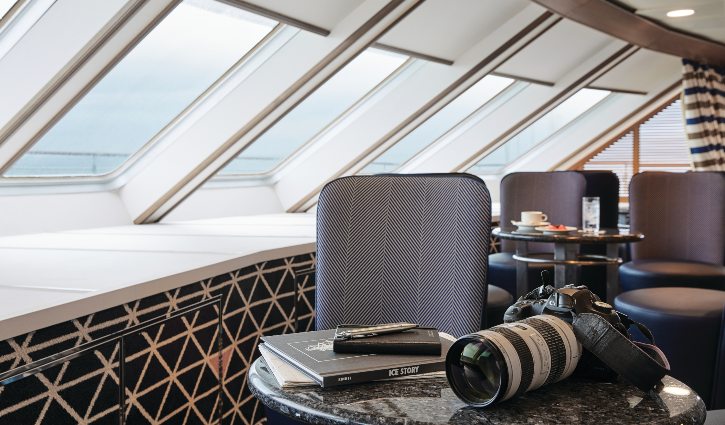
Days at sea are the perfect opportunity to relax, unwind and catch up with what you’ve been meaning to do. So whether that is going to the gym, visiting the spa, whale watching, catching up on your reading or simply topping up your tan, these blue sea days are the perfect balance to busy days spent exploring shore side.
DAY 9 Seven Spirit Bay
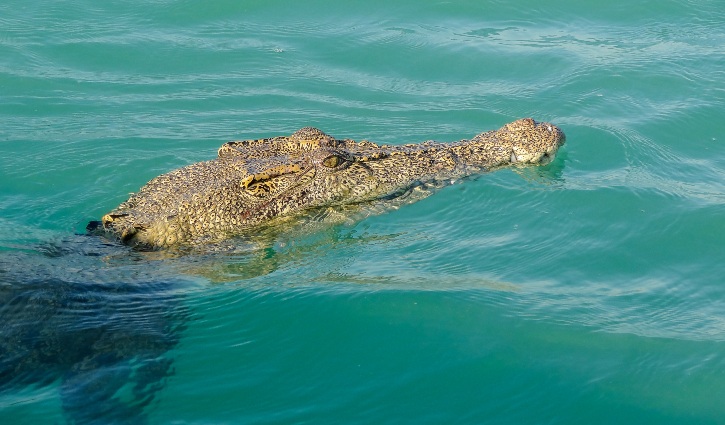
Seven Spirit Bay is located on the Cobourg Peninsula, in the Aboriginal Arnhem Land, and is part of the Garig Gunak Barlu National Park which covers an area of 4,500 square kilometres. The park preserves dunes, marine life, sea grass meadows, sandy beaches, coastal grasslands, rainforests, swamps, mangroves, lagoons and coral reefs. Part of the park is an internationally important wetland. Aboriginals have been living in the area for over 40,000 years and four tribes – the Agalda, Muran, Madjunbalmi and Ngaindjagar – are found in the area today. With spiritual links to the land and sea, these clans believe that their ancestors from the Dreamtime created all this magnificence. The Black Point Cultural Centre across the peninsula features a display of Aboriginal, Macassan and European histories of the area.
DAY 10 Elcho Island (Banthula)
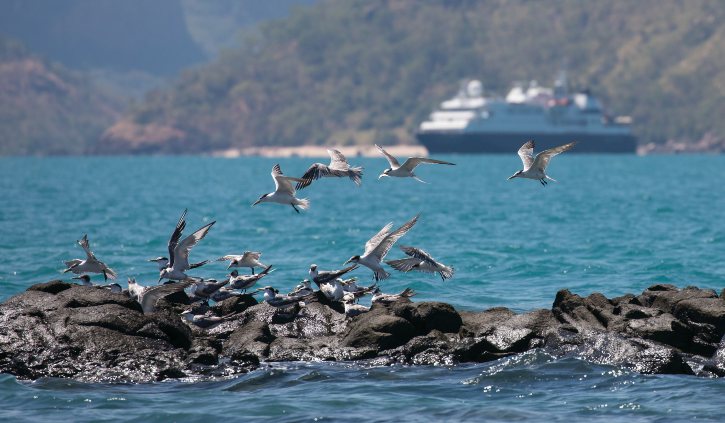
Elcho Island, known to its traditional owners as Galiwin’ku, is off the coast of the northern territory. It is the largest and most remote Aboriginal community in the northeast of Australia with restricted access and permission to visit is required by law.
DAY 11 Yirrkala
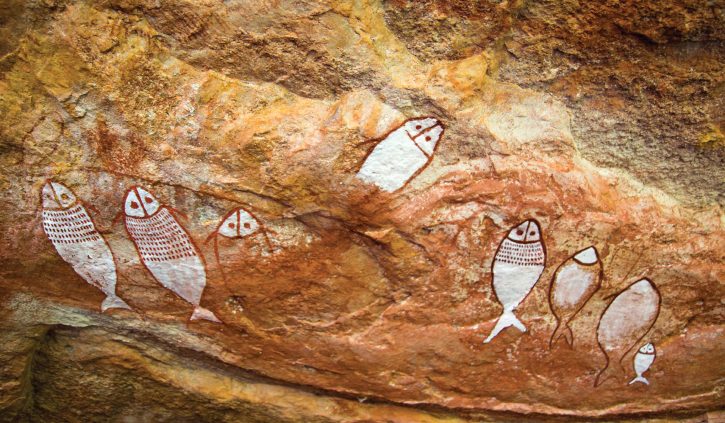
Yirrkala is an aboriginal community in northeastern Arnhem Land and has a population of roughly 800 residents. The Yolngu have been in the area for more than 40,000 years, but they only congregated here in larger numbers when the township was founded after a Methodist mission was started in 1935. This small coastal settlement became famous in the 1960s as the Yolngu opposed the opening of a bauxite mine on their land, writing (and sending) the Yirrkala Bark Petition to the Australian House of Representatives. Yirrkala is also one of the best-known locations of Aboriginal art -not only in the Northern Territories- and has the community controlled Buku-Larrnggay Mulka Art Centre and Museum. Just 10 kilometres south of Yirrkala is Wurrwurrwuy, an interesting arrangement of stones listed on the Australian National Heritage List. The stones have been set up in the mid-19th century and depict praus, canoes, sea cucumber boiling spots and houses. The arrangement of praus even indicate the division onboard the vessels, showing an excellent knowledge of non-aboriginal items connected with the Macassan sea cucumber trade.
DAY 12 Groote Eylandt
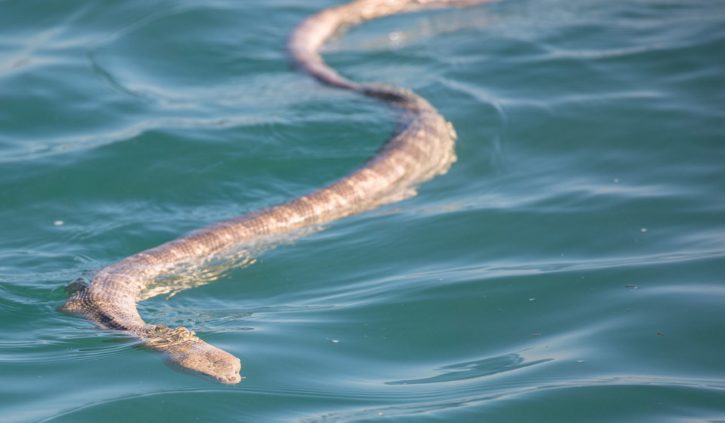
Groote Eylandt is the largest island in the Gulf of Carpentaria. It is the homeland of, and is owned by, the Warnindhilyagwa who speak the Anindilyakwa language. Here you can find an incredible range of flora and fauna including many endangered species. It is home to 900 species of plants, 14 species of mammal, 39 species of reptile and more than 80 bird species. Twelve threatened animal species thrive on Groote Eylandt, including the northern hopping mouse, the brush-tailed rabbit rat and the northern quoll.
The warm gulf waters surrounding the island are home to an amazing variety of marine animals including turtles, sea snakes, dugong, mud crabs, whales, sharks and an abundance of fish.
DAY 13 Mornington Island
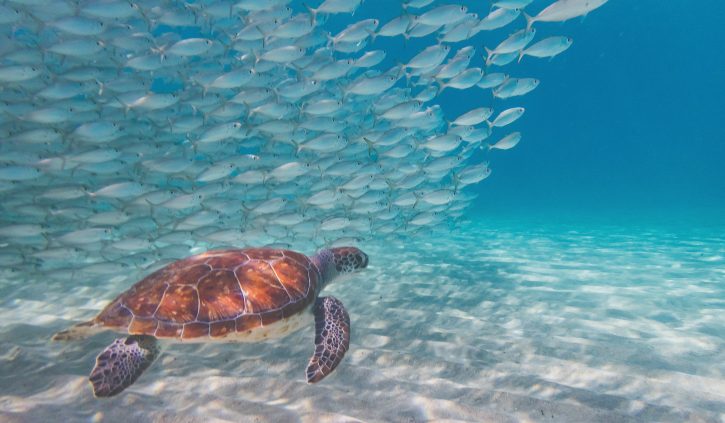
28 kilometres off the coast of mainland Australia in the Gulf of Carpentaria, Mornington Island is the largest of the North Wellesley Islands. Twenty two islands make up the Mornington Shire Council with the only township, Gununa, on Mornington. The islands and surrounding seas have been traditionally used by the Lardil, Yangkaal, Kaiadilt and Gangalidda peoples before Matthew Flinders anchored the HMS Investigator off Sweers Island (South Wellesley) in 1802 and named several islands, including Mornington. All islands in the Wellesley groups were declared ‘Aboriginal Reserves’ in 1905 and a mission was eventually started on Mornington in 1914 when some 400 Lardil were believed to live on the island. Over the years Aboriginal groups from other neighbouring islands were brought to live on Mornington.
Although the mission originally tried to (re)educate and convert Aboriginal children and kept them in isolated dormitories, eventually the mission supported a cultural revival and the communities’ goal of self-management and recognition of Aboriginal land tenure. Today the Mornington Island dancers and the acclaimed artwork that has been produced in the last couple of years show the rich Aboriginal culture. The unique natural environment with swamp flats and windswept beaches with sea oaks and mangroves is also an important marine area for turtles, endangered dugongs and an abundant underwater marine life –it is considered one of the best fishing destinations in Australia. … Despite having opened the island, permission to visit must still be sought from Mornington Shire Council six weeks prior to any intended visit.
DAY 14 At Sea
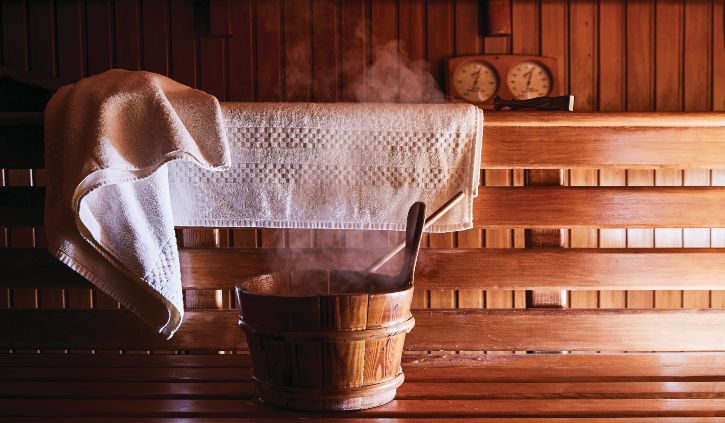
Days at sea are the perfect opportunity to relax, unwind and catch up with what you’ve been meaning to do. So whether that is going to the gym, visiting the spa, catching up on your reading or simply topping up your tan, these blue sea days are the perfect balance to busy days spent exploring shore side.
DAY 15 Thursday Island
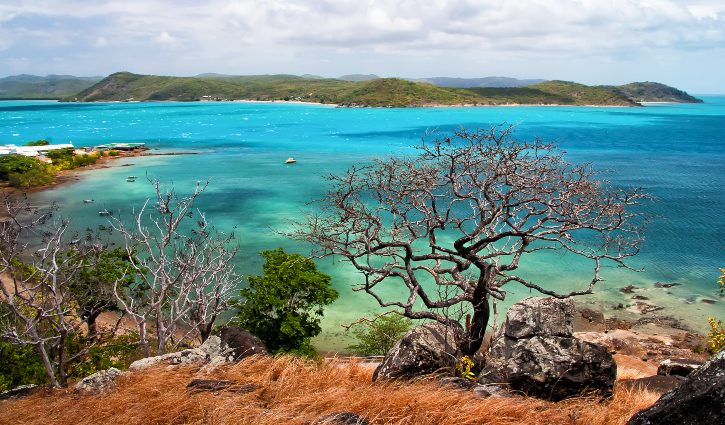
While it may not be the largest island – a taxi can take you on a bespoke tour of the entire island in less than an hour – Thursday Island is a vibrant jewel in Australia’s crown. Located adrift from the northern tip of the Australian mainland, it’s one of the tropical Torres Strait islands, which are scattered between the mainland and Papua New Guinea. A gaping deep water port means the location is ideal for fishing, but you’ll have to avoid the temptation to swim in its idyllic seas – the waters are renowned for crocodiles, sharks and stingers.
DAY 16 Lizard Island
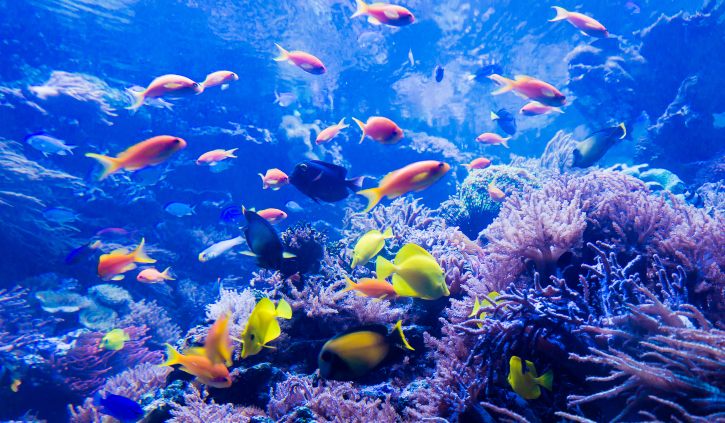
Hike to the highest point of the island following in the footsteps of Captain James Cook, or take a nature walk across the island and relax or snorkel in the tranquil waters of the Great Barrier Reef –UNESCO World Heritage.
DAY 17 Willis Islets
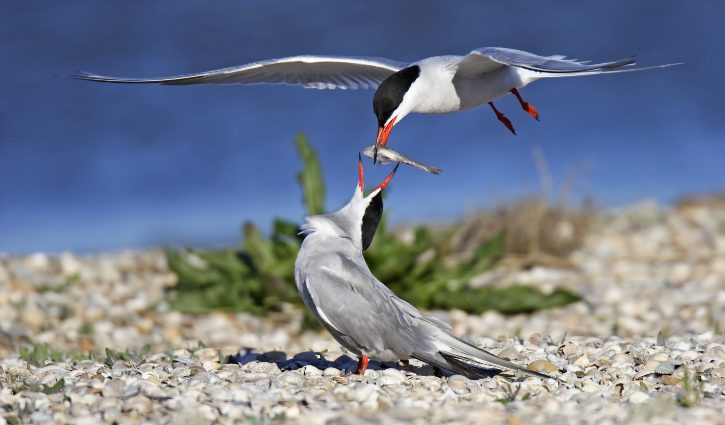
Willis Islets are a group of three sandy cay islands located beyond the Great Barrier Reef in the Coral Sea. They are home to millions of sea birds, turtles, crabs, eels and other animals and they are part of the Coral Sea Commonwealth Marine Reserve due to their unique physical, ecological and heritage values. To be granted access these islands, a permit will need to be issued from the government. Great care will be taken to not disturb the nesting birds, turtles and other wildlife and ecology of the island.
DAY 18 Michaelmas Cay
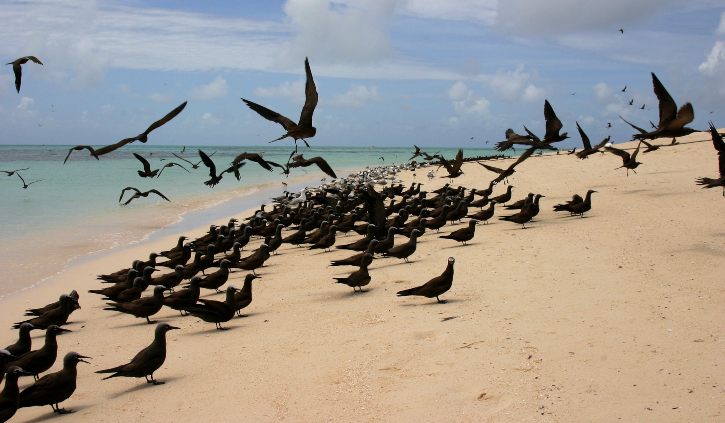
Michaelmas Cay, located on the western end of Michaelmas Reef, is part of the Michaelmas and Upolu Cays National Park and the larger UNESCO Word Heritage Great Barrier Reef. The 1.8ha cay is formed of the broken coral and shells which currents brought over and onto the reef and over time the cay has been covered partially with beach spinifex, stalky grass, sea purslane, beach morning glory and bulls head or puncture vine. Michaelmas Cay is considered one of the most important seabird breeding areas on the Great Barrier Reef with up to 20,000 pairs of seabird at the height of the season. As a result of the many seabirds the cay even had a guano mining lease in the early 20th century. Sooty Terns, Crested Terns, Lesser Crested Terns and Common Noddies nest all year round and another at least 12 species of seabirds have been recorded. Green sea turtles are seen occasionally and the reefs are an excellent area for snorkelling with visitors coming from Cairns, some 40 kilometres away.
In the evening you will arrive into Cairns.
DAY 19 Cairns, Australia
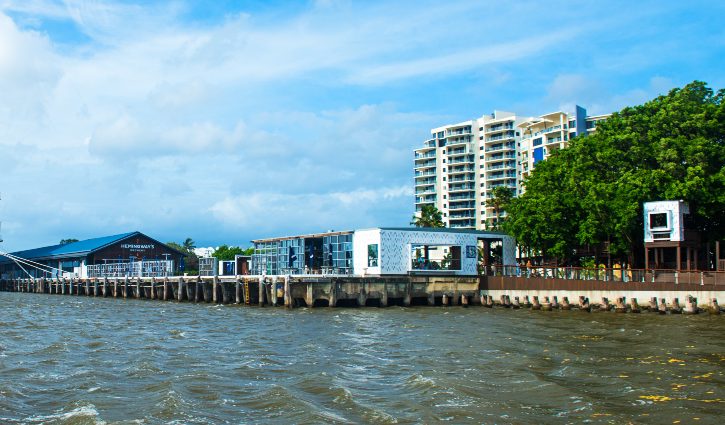
Warmly welcoming you to the natural wonders of the Great Barrier Reef, Cairns is a treasure trove of rich tropical beauty and incredible sea life. Swathes of rainforest spread out to the north, where you can soar over the canopy in a cable car, before looking down over narrow channels of water plummeting down gorges and crocodile-filled waterways. The diverse lands of the Atherton Tableland lie to the west, but it’s the crystal-clear waters – and life-filled reefs – of Cairns’ remarkable underwater world that draws universal adulation. Priding itself as the Gateway to the Great Barrier Reef, explore Cairns’ constellation of colour, as you dive into the world’s largest and most spectacular underwater universe. Head out on a glass-bottomed boat tour to explore the 3,000 coral reef systems, and let hours drift by appreciating the waving corals and life-imbued reefs during exceptional scuba diving and snorkelling sessions.
Kuranda – with its scenic railway and heritage market stalls – waits to be discovered, cloaked within the depths of the rainforest. Learn of the indigenous people of North Queensland during cultural performances, and hear the throaty reverberations of digeridoos, as you hear eternal stories handed down through time, from generation to generation. Back in Cairns, there’s always time for a coffee or a beer, or a feast on fresh oysters with glasses of Cairns’ white wines – boldly flavoured with mango and banana notes.


